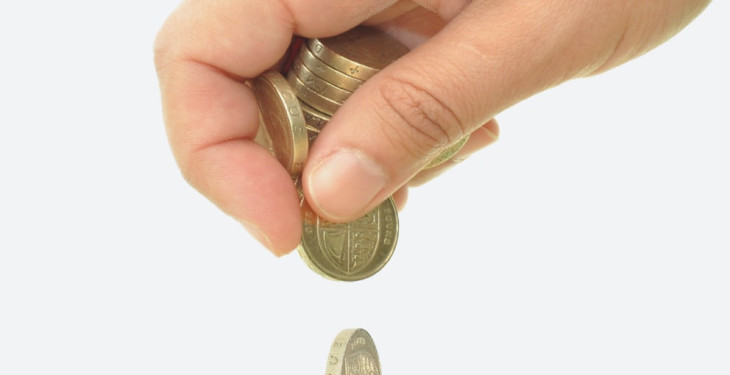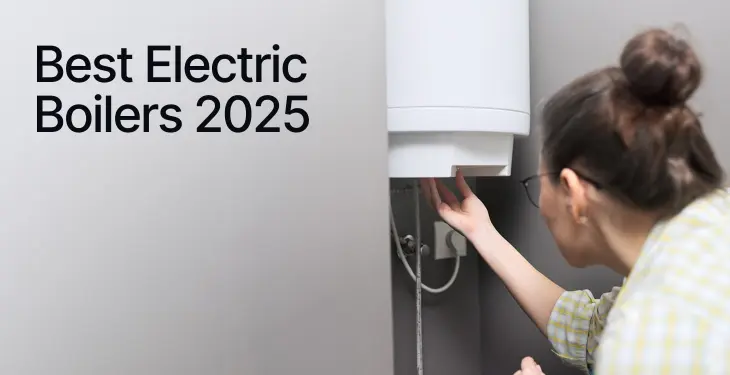

Written by Stephen Day
Gas Safe Engineer
Updated: 30th May, 2025
Discover the comprehensive guide to understanding and turning off your radiator effectively, learn about the key components, maintenance tips and when to turn off your radiator for optimal performance and energy-saving benefits.
Get a new boiler quote, save up to £550 per year (0% APR available).
Radiators play a vital role in providing warmth and comfort in homes and offices, forming an integral part of central heating systems.
Get a quote in 60 seconds, fitted as fast as next day!
0% APR finance available.
Understanding how to turn off a radiator properly is essential for various reasons, such as performing maintenance, saving energy, or controlling the temperature in a specific room. In this article, we will discuss the fundamentals of radiator components and the steps required to turn off a radiator safely and efficiently.
In addition to learning the steps to turn off a radiator, it is equally important to know when and why one would need to do so. This knowledge comes in handy in situations like seasonal changes, ventilation needs, or troubleshooting issues with your radiator.
To help you make the most of your radiator while maintaining its efficiency, we have also included a section on common radiator maintenance tips and frequently asked questions.
A radiator is a crucial element in a central heating system, providing warmth to individual rooms. Typically, central heating systems use water or steam from a central boiler or furnace to generate and distribute heat.
Essential components in this process, radiators are designed to ensure efficient heat transfer while also maintaining a comfortable environment inside the home.
Radiators function through convection, a process where a heated surface transfers heat to the surrounding air. As the air near the radiator warms up, it rises, distributing the warmth throughout the room.
This movement allows cooler air to flow towards the radiator, repeating the cycle and maintaining a consistent temperature in the room.
There are two common types of radiators: steam radiators and hot water radiators. Although similar in appearance, their internal workings differ. Steam radiators utilise steam from a boiler, which condenses into water as it cools, before returning to the boiler to be reheated.
On the other hand, hot water radiators circulate hot water through pipes that connect to the radiators, transferring the heat to the room and then returning the cooled water to the boiler for reheating.
Radiator valves are essential components, enabling temperature adjustments to be made for individual rooms. Modern radiators usually feature thermostatic radiator valves (TRVs), which respond to changes in room temperature by adjusting the flow of hot water or steam to the radiator. Consequently, they help maintain a comfortable environment while simultaneously increasing energy efficiency.
In summary, radiators work by utilising convection to efficiently distribute heat in a central heating system. They come in two main types: steam and hot water radiators, both of which rely on valves to modulate temperature. These components play a critical role in creating and maintaining a comfortable living space, proving vital to any effective central heating system.
Check out our guide to the Best Combi Boilers!
In this section, we will explore the key components of radiators and their functions. We will cover different types of valves, single-pipe and two-pipe systems, and thermostatic radiator valves.
Radiators utilise several types of valves. Two of the primary valves are the thermostatic valve and the lockshield valve. Thermostatic valves regulate the temperature in a room by controlling the flow of hot water. On the other hand, lockshield valves maintain the balance of water flow across the system by restricting the flow rate to each radiator.
Non-thermostatic valves are also used in radiators. They can be adjusted manually to regulate the heat output of a radiator but do not respond to temperature changes in the room.
Radiator systems fall into one of two categories: single-pipe and two-pipe systems.
Single-pipe systems consist of a central pipe connecting all radiators in a sequence. This arrangement allows hot water to flow through each radiator before returning to the boiler. However, single-pipe systems can have reduced efficiency, as heat is lost while water travels through the system.
Two-pipe systems, as the name suggests, contain separate pipes for both supply and return. This design means that hot water is supplied to each radiator via one pipe, and the cooled water returns to the boiler through another pipe. This improves efficiency and provides more uniform heat distribution across the system.
Thermostatic radiator valves (TRVs) play an essential role in obtaining optimal temperature control. TRVs sense the room's ambient temperature and adjust the flow of hot water into the radiator accordingly.
Each TRV has a numbered dial ranging from 0 to the maximum setting, with 0 representing the off position. By setting the dial to the desired number, the TRV can maintain the room temperature at a comfortable level.
These valves are often located on the radiator's bottom left side and can be easily adjusted to suit individual preferences.

When it comes to turning off a radiator, there are a few straightforward steps you should follow. This section will cover the essential steps and information needed to accomplish that.
Before turning off a radiator, you must first locate the correct valve. Radiators typically have two valves: a thermostatic radiator valve (TRV) and a manual valve. The TRV is usually found on the bottom left side of the radiator and has a numbered dial, while the manual valve is often found on the opposite side.
Once you have identified the appropriate valve, proceed to turn it off. To turn off the TRV, rotate the valve clockwise until it is in the fully closed position. If your TRV has a numbered dial, turn it to the lowest setting or the "off" position. For TRVs with a "+" and "-" symbol, rotate the valve towards the "-" symbol until it stops.
For manual valves, use a spanner, pliers, or screwdriver to carefully close the valve by turning it clockwise. Keep in mind that turning the valve too forcefully may damage the mechanism, so it's crucial to proceed with care.
To confirm that the radiator is off, give it some time to cool down. You should notice a distinct change in the room's temperature.
Furthermore, the radiator's surface should become cool to the touch. If the radiator remains warm or continues to emit heat, ensure that both valves are fully closed, and consider tightening the manual valve with the appropriate tool if necessary.
By following these guidelines, you can turn off a radiator confidently and effectively. Remember to locate the correct valve, turn it clockwise to close it, and then ensure the radiator is off by checking its temperature after a short period of time.
There are several reasons and circumstances when it might be necessary to turn off a radiator, including balancing a heating system, managing overheating issues, and lowering heating costs. In this section, we will discuss these aspects in more detail.
Balancing your heating system ensures that all radiators in your home produce an equal amount of heat for a comfortable and uniform room temperature. Some issues that can lead to an imbalanced heating system are:
Incorrect radiator valves' settings
Uneven pipe sizes or routing
Inadequate boiler output capacity
Turning off your radiator can help you identify the problem and fix it by adjusting the valves to achieve the desired temperature in each room. Furthermore, a balanced system results in improved energy efficiency and lower energy bills.

Overheating in a room may occur when radiators release too much heat. This can lead to discomfort and can even pose a danger to occupants or damage furniture and electronic devices. Turning off a radiator can help manage overheating issues by:
Regulating room temperature to a comfortable level
Allowing the heating system to cool down and reset
Reducing the risk of accidents and damage associated with excessive heat
Turning off the radiator allows you to control the temperature and avoid any adverse effects associated with overheating.
It is possible to lower heating costs by consciously turning off radiators when they are not needed. The following actions can help with reducing energy bills:
Turning off radiators in unoccupied rooms
Adjusting the central heating system settings when away or not in use
Using programmable thermostats to schedule heating based on the occupants' presence
By turning off radiators, you can reduce your home's heat loss and retain warmth for longer periods. Consequently, your boiler will work less frequently, resulting in lower heating costs and energy expenses.
In conclusion, turning off a radiator can prove beneficial in various circumstances, including balancing heating systems, managing overheating issues, and lowering heating costs. It's essential to assess these factors in context and act accordingly to maintain a comfortable and energy-efficient home environment.

Maintaining your radiator is essential for its efficiency and longevity. This section will focus on three key aspects: avoiding radiator leaks, regular bleeding of radiators, and replacing radiators when necessary.
Radiator leaks can lead to water damage and decreased efficiency in your heating system. To prevent leaks, ensure that your pipes, valves, and joints are properly sealed and check them regularly for signs of wear. Investing in a good radiator cover helps protect the unit from external damage and dust accumulation.
In addition, it is important to isolate a radiator when required, for instance during repairs or maintenance. For those with a steam radiator system, monitoring your steam pressure and temperature is crucial to prevent damage due to high pressures.
Regular bleeding of your radiators ensures optimal heat output and efficiency. This process involves releasing trapped air from the system, allowing for a smoother and more consistent water flow.
Step 1: Locate the bleed valve, typically situated at the top of the radiator.
Step 2: Use a radiator key, or in some cases, a flathead screwdriver, to open the valve.
Step 3: Slowly turn the valve anti-clockwise until you hear a hissing sound, indicating that air is escaping. Be prepared to catch any water that might overflow.
Step 4: Close the valve immediately once water starts to flow.
Performing this process at least once a year is recommended, or whenever you notice a decrease in heat output from your radiators.
Additionally, balancing your radiators by adjusting the thermostatic radiator valves (TRVs) and lockshield valves can ensure even heat distribution throughout your home.
While regular maintenance can prolong the life of your radiator, you may still need to replace a unit when it becomes inefficient or damaged beyond repair. Signs that it's time to consider replacing a radiator include:
Persistent leaks or corrosion
Inadequate heating
Outdated and inefficient design
In such cases, opt for modern radiator designs, such as heated towel rails or energy-efficient radiators, to improve the overall performance and appearance of your heating system.
Check out our mega guide on New Boiler Costs!
Last updated: 30th May, 2025

Written by Stephen Day
Gas Safe Engineer at iHeat
Stephen Day is a Gas Safe registered and FGAS certified engineer with over 20 years of hands-on experience in the heating, cooling, and renewable energy industry, specialising in boiler installations, air conditioning, and heat pump systems.
LinkedInArticles by Stephen Day are reviewed by iHeat’s technical team to ensure accuracy and reliability.

11th December, 2025
The best electric boilers in 2025 include models from Electric Heating Company, Heatrae Sa...
 Read Article
Read Article

11th December, 2025
A simple guide to the smallest combi boilers that fit inside kitchen cupboards and tight s...
 Read Article
Read Article

11th December, 2025
Find out which electric combi boilers are the most efficient and reliable in the UK for 20...
 Read Article
Read Article
No obligation. Takes less than 60 seconds.